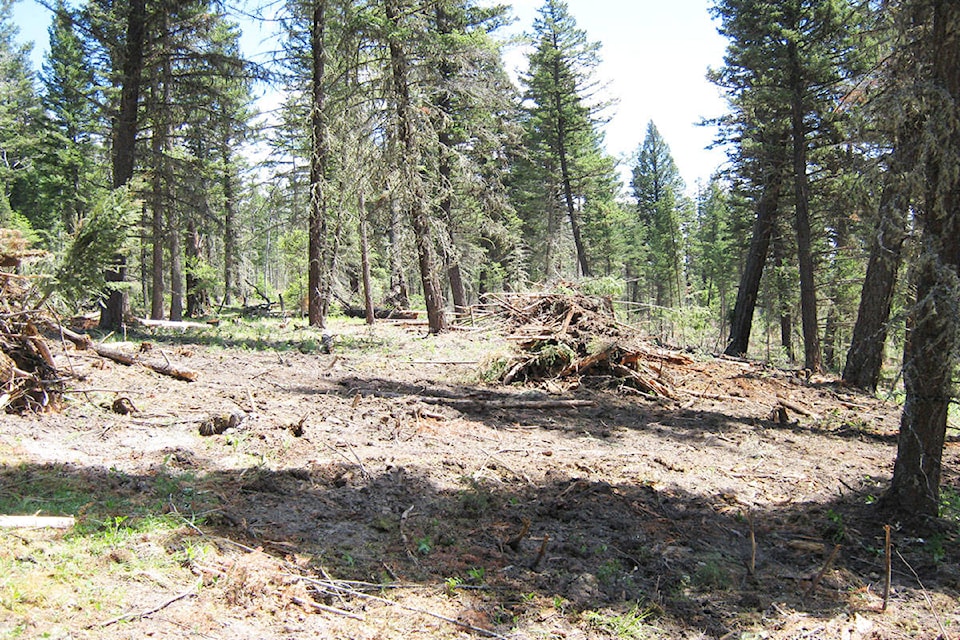The 100 Mile House Community Forest continues to make progress on fuel management projects along Horse Lake Road and Highway 24, with two permit areas nearing completion and several others making good progress over the past month, according to a news release from the district of 100 Mile House on July 9.
Joanne Doddridge, director of Economic Development and Planning for the District of 100 Mile House, said that work in those areas has included a combination of mechanical harvesting and hand crews.
According to the release, the areas above Horse Lake Road are pioneering the use of a normal cutting permit process to create fuel breaks in the Wildland Urban Interface around 100 Mile House.
Creating fuel breaks with harvesting machines is a relatively new process, said Doddridge in the release, and the areas along Horse Lake Road are some of the first in the region to be managed primarily with logging equipment as well as with minimal funding from the government.
“Since its inception, the Community Forest has sent timber to the local mills, supporting local employment,” reads the release. “This will not change. That said, the closure of the Norbord mill will have a direct impact on the Community Forest’s operations as much of the smaller material being harvested was slated to go to Norbord’s OSB program.”
Doddridge advised that the Community Forest pulpwood “is now going either to Quesnel Pulp or to River City in Kamloops” in an email to the Free Press on July 17.
Doddridge said that local forest and lands ministry staff, along with BC Wildfire Service and the Forest Enhancement Society of BC are quite interested in the progress being made on these Fuel Break areas.
Local, regional and provincial staff from these ministries actually held a Fuel Management Treatment field review in early June on one of the blocks from Horse Lake Road.
“The Community Forest is working diligently to meet objectives for Mule Deer Winter Range use, Old Growth Management protection, retention of visual quality, increased safety and ability to action any fires that start on the unit, and the reduction of wildfire threat. Using logging equipment to do a majority of the harvesting and fine surface fuel reduction means a lower cost for implementing the fuel treatments, and more of the woodcut on the areas can be utilized.”
As the weather permits, locals may see crews conducting “manual treatments” with chain saws this summer and fall, to link the mechanical treated areas above Horse Lake Road. The work is expected to continue through the summer as long as the wetter weather continues, said Doddridge.
Residents along Horse Lake Road North and near the Horse Lake School neighbourhoods will likely see layout crews in the bush in the next month working to prepare the units for Fuel Management treatment.
At this time, the management of the Community Forest is in somewhat of a transition state, as no new manager has been hired for the position since the departure of former Community Forest manager Bill Hadden. Currently, Doddridge and CAO Roy Scott are collaborating to oversee the administration of the district’s Community Forest.
raven.nyman@100milefreepress.net
Like us on Facebook and follow us on Twitter.
